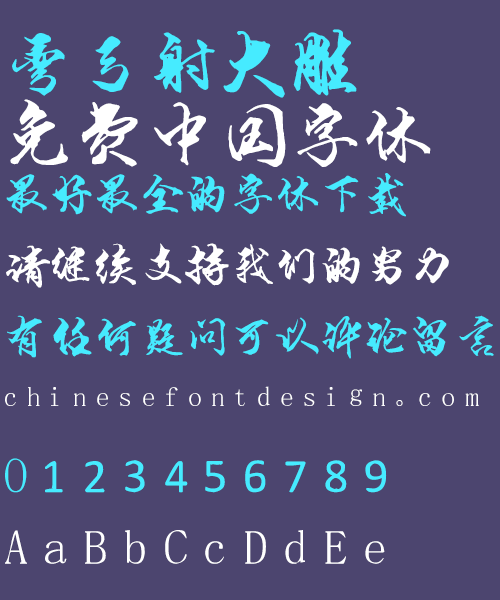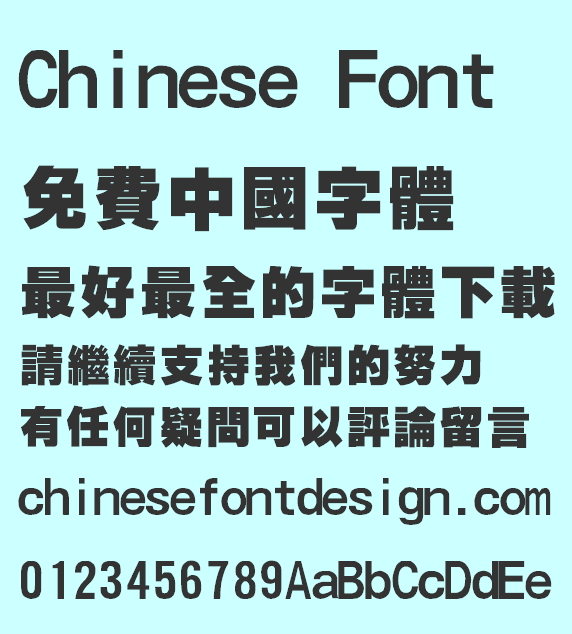

The gaps between eye and hand, taste and technique needed time to meet and connect as one.
#Traditional chinese calligraphy font free how to
When the idea for the typeface began six years ago, Hui could visualize what the typeface was meant to be, but he wasn’t sure exactly how to do it. Hui returned home to Hong Kong, started his own foundry, and rekindled his faith in Ku Mincho. Then the pandemic brought a now-or-never ultimatum, causing many to question their own destinies. Understandably a little defeated, Hui considered leaving the type design world for a bit to pursue communication design and moved to Munich, Germany in 2018.

Throughout his career, Ku Mincho was an idea that kept surfacing in his mind, but he was often told that Ming typefaces don’t have a market, or that not enough people like it because it feels old-fashioned. In the last decade and more, Hui has worked at Dalton Maag in London and several Monotype locations, where he designed over 10 typefaces and led the multilingual custom typeface project for one of China’s biggest tech companies, Tencent. When added up to columns and rows, set vertically or horizontally, they start to form their own elegant compositions. The spaces around each character become more organic and less predictable, creating room for a breeze to move in and out of each character to guide the eye from stroke to stroke, character to character. Hui intends for the design and its reading experience to feel as natural as air, as effortless as breathing. The character for “Ku” means “air” and serves as a both guiding mantra and typographic principle. Each stroke is designed to be in conversation with the entirety of its character to feel like one complete image, and follow a contrast model that illustrates the pressure, warmth, and softness of the calligraphic brush. The characters are narrower at the top and wider at the bottom, resembling the gestures of Chinese handwriting that have been second-nature for centuries. Its proportions follow more of a gently sloping triangle, a change that is slight but significant in changing the overall texture.
#Traditional chinese calligraphy font free free
First, it breaks free from the square box that had been imposed on Hanzi for decades. Ku Mincho differentiates itself from existing Ming typefaces in design, structure, and proportion. But when looking back at ancient Chinese calligraphy sources and early movable type, there was a distinct heartbeat and spirit that has been forgotten over time.

If Japanese kanjis were designed to be stones that ground and guide a flowing stream of kanas, when they are used in Chinese text they feel stiff and rigid-blocking instead of guiding natural currents of the eye. An example of the relationships between typeset Japanese Kanji and Kana. The Chinese typefaces that developed thereafter have been largely dictated by Japanese tastes, and strayed further away from their visual ancestry. By the mid-20th century, Japanese foundries occupied most of the phototypesetting businesses in these regions. After the fall of the Qing dynasty in 1911, Taiwan, Hong Kong, and China were primarily importing and printing with these Japanese metal types. Image courtesy Julius Hui.Īround the mid-19th century, when Chinese movable types were first exported to Japan, the Japanese kanji were changed to fit almost perfectly inside a square box, to serve as sturdy anchor points to complement the more free-spirited hiragana and katakana scripts. This habit formed overtime as an outcome of cultural imports and exports, but continues to pose practical problems as well as aesthetic ones. Instead, many designers in Hong Kong, Taiwan, and China will often use the Hanzi from Japanese typefaces in their work, since Japan’s font culture and aesthetics are considered the most refined and have had the most time to mature within East Asia. He remembers asking people how they feel about Chinese typefaces, to which many replied, they don’t.

But what exactly has been lost?Įver since Hui was a student at the Hong Kong Polytechnic University in the late 2000s, he’s seen how the mood of a layout could be killed with setting Chinese typefaces. Ku Mincho sets out to be a typeface that revives the innate beauty of Chinese characters. Yet behind this feat was a long, uneasy road. To date, he’s raised more than five times that amount-indicating both an excitement and a clear need for the typeface. The initial goal of four million NTD (a little under $150,000) was reached in only a few hours. At the beginning of 2021, type designer and typographer Julius Hui launched a crowdfunding campaign for Ku Mincho, a Ming-style typeface he began concepting six years ago.


 0 kommentar(er)
0 kommentar(er)
